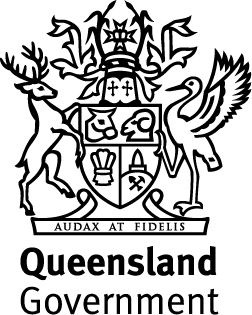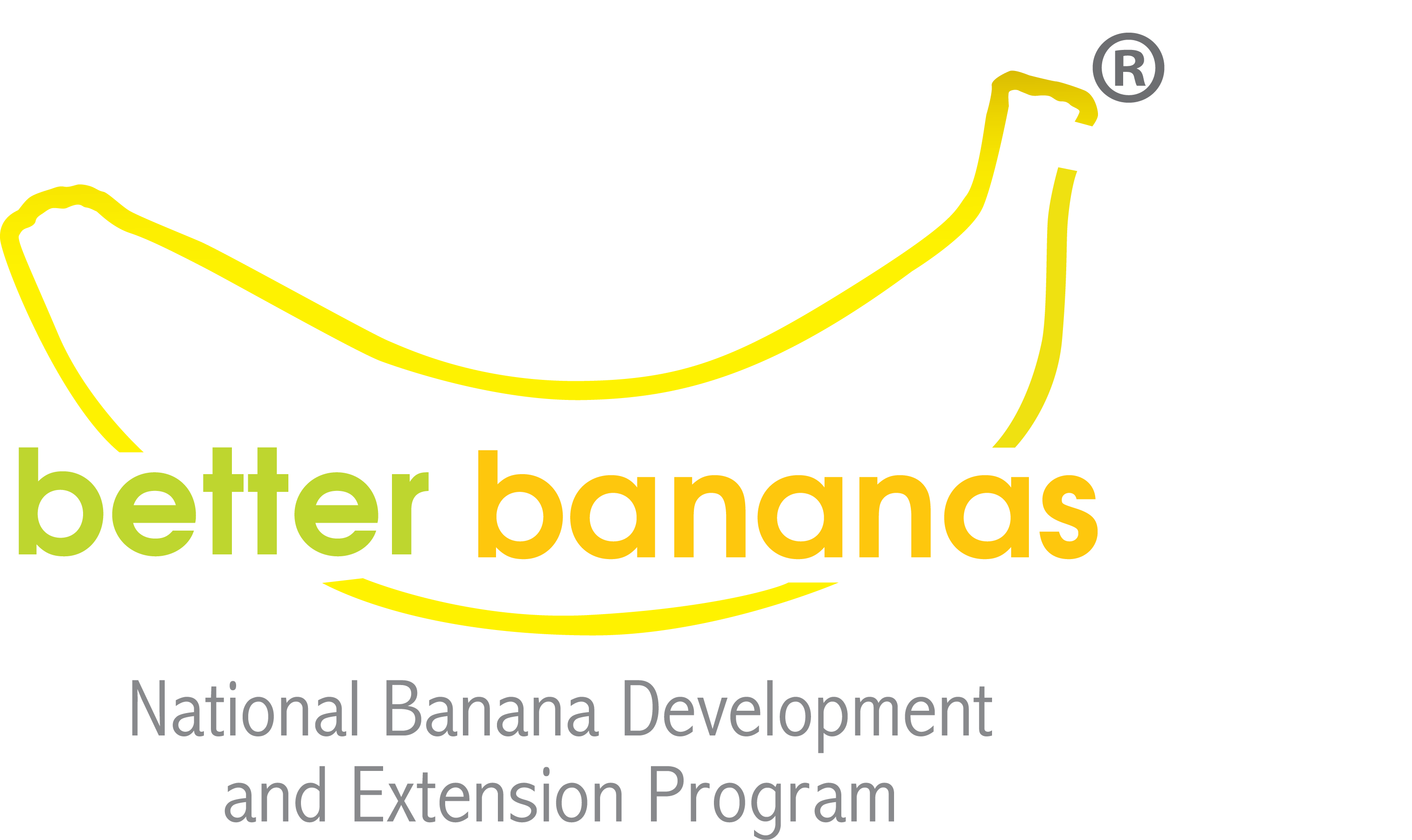Banana bunchy top disease
Banana bunchy top is considered the most serious viral disease of bananas worldwide
Banana bunchy top disease (BBTD) reduces the growth of banana plants and causes bunching of newly emerged leaves (Figure 1). Infected plants rarely produce fruit and are a source of inoculum for further spread, which can lead to serious commercial losses if not promptly eradicated. The disease is caused by a virus (banana bunchy top virus, BBTV) and affects all banana varieties. Unfortunately, there is no cure for the disease, once a plant becomes infected it must be destroyed as all parts of the clump/stool/mat are also infected.
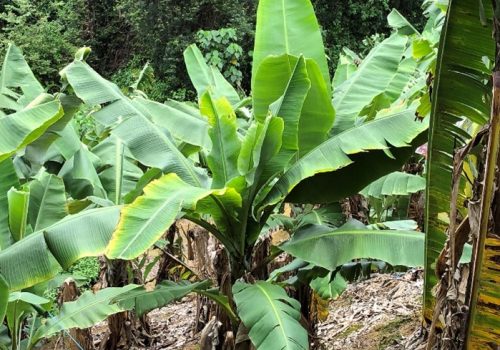
BBTV is spread two ways, by banana aphids and infected plant material
BBTV is transmitted by a small black insect (1.5–2.0 mm long) called the banana aphid Pentalonia nigronervosa (Figure 2 & 3). Aphids that feed on infected plants can carry the virus spreading it to healthy plants as they feed. Aphids can carry the virus for several weeks and may cover large distances when blown by the wind. The virus can also be spread to new areas from infected planting material. It’s important to note that plants can be infected with the virus without showing symptoms. It’s always recommended that you source tissue cultured planting material from a Quality Approved Banana Nursery (QBAN) to minimise the risk of introducing serious pests and diseases onto your farm, such as Panama disease, BBTV, banana weevil borer and many more. Click here for a list of QBAN accredited nurseries.
New research discovers new findings on virus transmission and explains why this disease is so hard to eradicate.
Click here for more information.
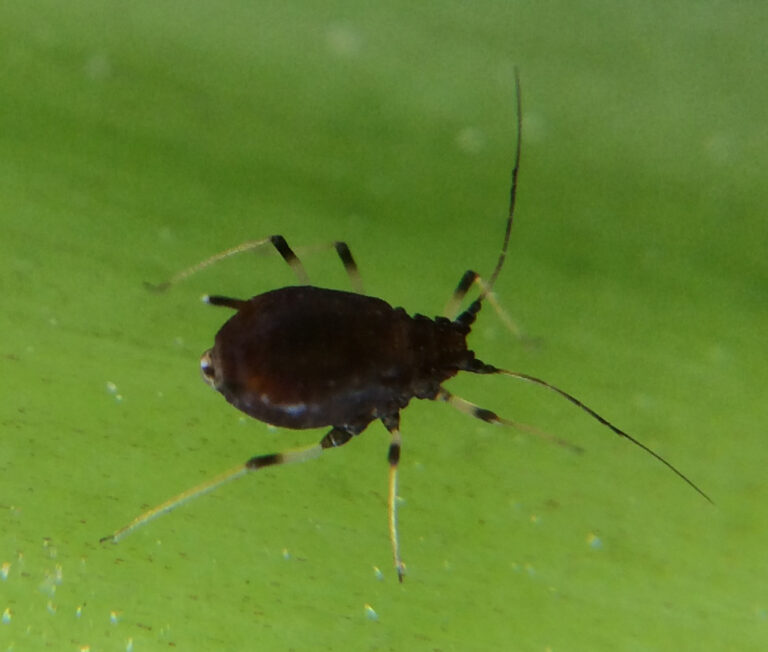
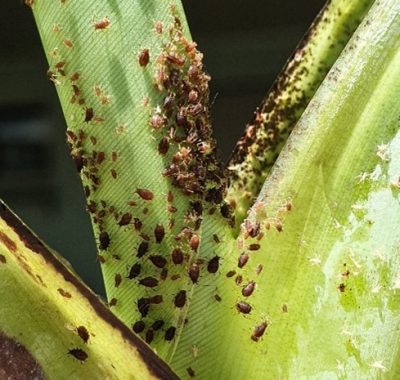
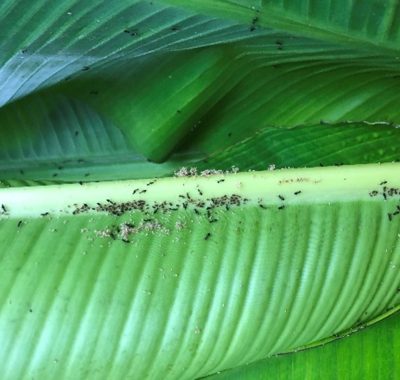
Control and containment activities continue to play an important role in limiting the spread of BBTV within Australia.
Banana bunchy top disease was first discovered in Australia over a century ago in the Tweed River region, located on the New South Wales and Queensland border. To date the disease has been successfully contained within the Bunchy top zone of South East Queensland and northern New South Wales. The banana growing regions of Far North Queensland, Northern Territory and Carnarvon in Western Australia remain free of the virus. However, it’s important for banana growers across all production regions to be on the lookout for BBTD symptoms.
What to look out for?
Early symptoms of BBTD can be difficult to detect to the untrained eye. If you have stunted or unthrifty banana plants, examine the leaf lamina of the newest banana leaves for short dark green on lighter green dot-dash lines starting from, and sometimes extending or ‘hooking’ into, the mid-rib (Refer to photos below). You can see them best if you hold the leaf up to the light and look through from the underside of the leaf. There may also be dark green stripes running along the mid-rib. Plants with advanced infection have stunted looking leaves and a bunched appearance (bunchy top). If bunches are present, they may be small and deformed.
Do not cut or disturb plants or move plant material off your property as this can spread the disease.
Key symptoms
- Dark green on lighter green, dot-dash flecks (sometimes called Morse code streaking/patterning) on leaves.
- Dot-dash flecks are initially visible along the lower edge of the leaf’s midrib, then progress to the leaf veins adjacent to the midrib, and gradually becoming more prominent across the leaf blade.
- Eventually dot-dash flecks can form into irregular streaking.
- Leaf flecks and streaking are most visible when viewed from the underside of leaves.
- Flecks in veins can form a characteristic ‘hook’ shape at the point where the midrib meets the leaf blade.
- Vein-flecking can also be seen on the petioles and in the leaf sheaths of stems.
- Growth of the whole plant is reduced and emerging leaves develop a choked or ‘bunched” appearance.
- Affected leaves often appear more upright with pale yellow margins, and may have wavier leaf edges than normal.
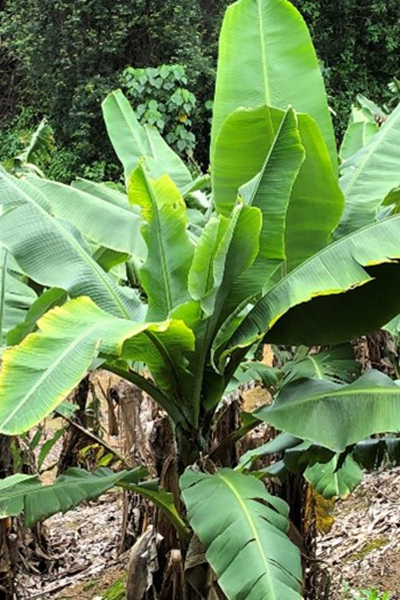
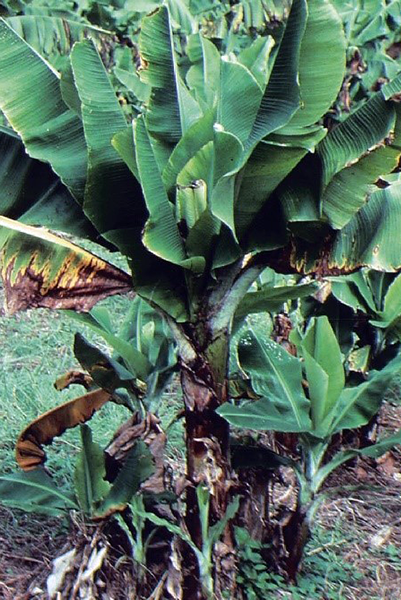
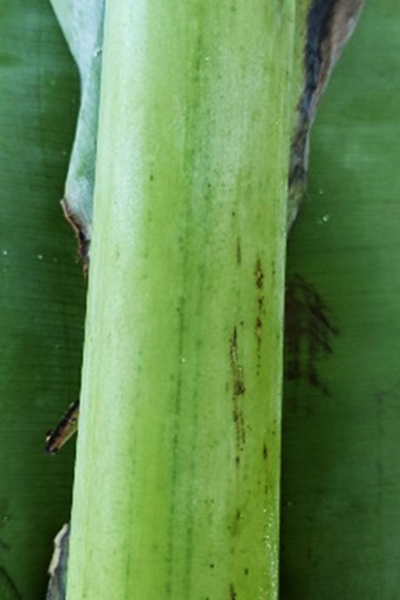
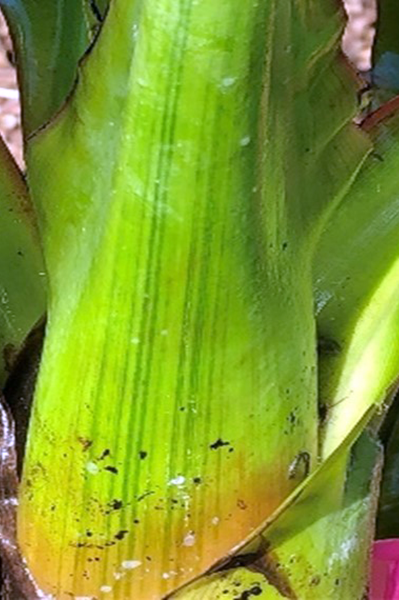
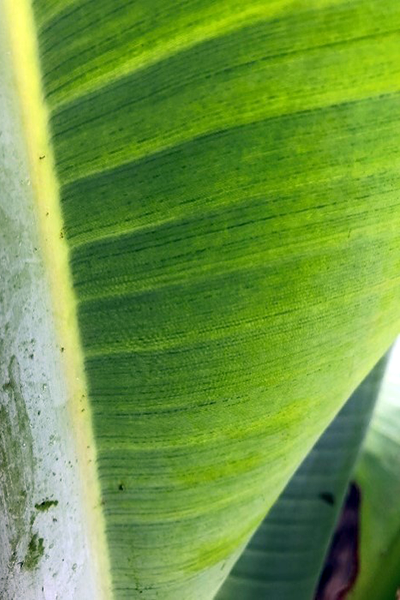

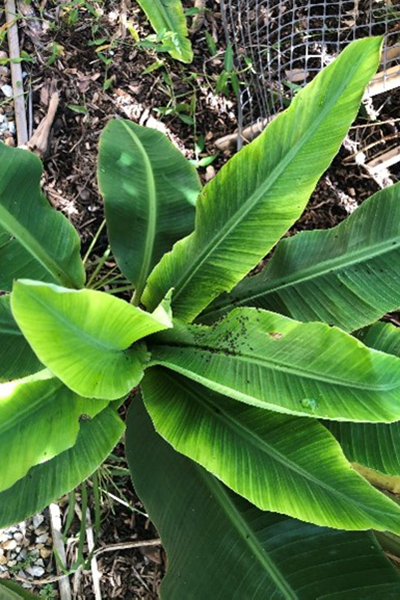
ABGC have produced the following video on how to detect Banana Bunchy Top Virus symptoms in commercial plantations.
How to report
It’s important for banana growers across all production regions to be on the lookout for BBTD symptoms.
Growers or members of the public that suspect BBTD must immediately notify their state’s biosecurity agency or through the bunchy top hotline 1800 068 371. Early detection and destruction are critical to limit its spread. Strict quarantine restrictions remain in place to prevent the movement of contaminated planting material.
Surveillance and containment work within the known bunchy top zone is continuing as part of Hort Innovation’s ‘Multi-pest surveillance and grower education to manage banana pests and diseases’ project, led by the ABGC. This important work is aimed at controlling and containing the disease within the known BBTV zone, supporting the commercial industry within this zone and aims to prevent its spread to other commercial growing regions within Australia. Click here to read more information about this project.
Currently, there is no cure for BBTV and there are no known resistant banana varieties. Control is only achieved through the destruction of infested plants and banana aphids. Early detection and destruction are critical to limit the spread of BBTD.
Latest research update
Click here to read about the latest new research that helps explain why banana bunchy top disease is hard to eradicate.
More information
In collaboration with ABGC, this information has been compiled by the National Banana Development and Extension Program (BA19004). This project has been funded by Hort Innovation, using the banana research and development levy, co-investment from the Department of Agriculture and Fisheries and contributions from the Australian Government. Hort Innovation is the grower-owned, not-for-profit research and development corporation for Australian horticulture.

